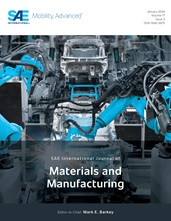An Investigation into Friction Stir Surfacing of AA 6061-T6 Alloy on Low-Carbon Steel: Microstructural and Mechanical Analysis
- Features
- Content
- Friction stir surfacing is an advance surface modification technique, which is functionally evolved from the friction stir welding process. However, the fundamental reason behind the joining of Al/steel is difficult due to the formation of hard and brittle intermetallic compounds (IMC). To address the problem of IMC formation, the current study suggested an alternate production technique with solid-state friction surfacing deposition. In this work, the adhesion mechanism and metallurgical properties of solution-treated AA6061-T6 aluminum alloy cladding over a low-carbon steel IS2062 substrate were investigated. Impact procedural factors (axial frictional force, spindle speed, table traverse speed, consumable rod diameter, and substrate roughness) were examined. Push-off and hardness tests were used to inspect the mechanical properties of cladded samples. 67–77± HV hardness is observed at the interface of the cladded cross-section. A push-off strength of 9 kN was achieved, indicating effective bonding between the AA6061-T6 alloy and the low-carbon steel substrate. Microexamination indicated that there is clear bonding through broken asperities, which are due to mechanical interlocking. The suggested approach can likewise be used with other dissimilar combinations that are mutually intractable.
- Pages
- 12
- Citation
- Badheka, K., Sharma, D., and Badheka, V., "An Investigation into Friction Stir Surfacing of AA 6061-T6 Alloy on Low-Carbon Steel: Microstructural and Mechanical Analysis," SAE Int. J. Mater. Manf. 19(2):1-12, 2026, https://doi.org/10.4271/05-19-02-0013.
